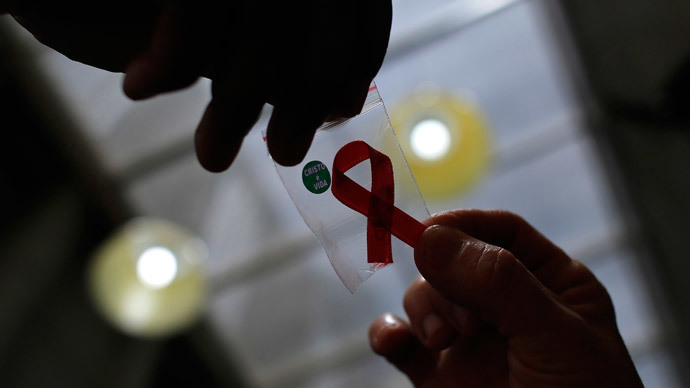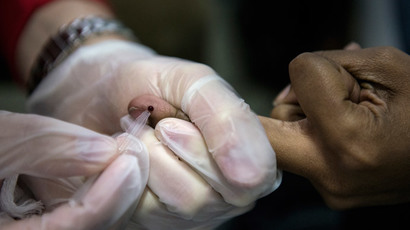'Watered-down' HIV becoming milder, taking longer to cause AIDS – scientists

Scientists at the University of Oxford have discovered that HIV is evolving into a less-threatening, “watered-down” version of the virus, which affects 35 million people worldwide.
The team of academics showed the initial HIV infection was taking longer to cause AIDS, and leading professors claimed it could become “almost harmless” as its evolution continues.
The study, which observed the decreasing virulence of HIV over time, suggested that the changes in the virus could help contain the worldwide pandemic.
Academics working on the study found that when HIV attacks a body with a particularly effective immune system, it is forced to mutate and can become less virulent.
Professor Philip Goulder said that when the virus comes in contact with a strong immune system it is “trapped between a rock and a hard place.”
“It can get flattened or make a change to survive and if it has to change then it will come with a cost,” he added.
According to their results, published in the Proceedings of the National Academy of Sciences, the virus becomes less virulent because its ability to reproduce becomes compromised when faced with strong opposition from an immune system.

As a consequence it takes far longer for the virus to turn into AIDS, giving sufferers a longer life expectancy.
The “watered-down” version is then transmitted, beginning a slow process of change within the infected community.
The study says “factors that influence the virulence of HIV are of direct relevance to ongoing efforts to contain, and ultimately eradicate, the HIV epidemic.”
They primarily focused their research on the affected countries of South Africa and Botswana.
Botswana has had been plagued with high levels of HIV/AIDS since 1985, with 25 percent of the adult population living with the virus in 2011.
South Africa also has high levels of infection, but did not have any HIV cases until a decade after Botswana.
The difference in time-scale allowed the team of scientists to monitor the virulence of the virus over time.
“It is quite striking. You can see the ability to replicate is 10 percent lower in Botswana than South Africa and that's quite exciting,” Goulder told the BBC.
“We are observing evolution happening in front of us and it is surprising how quickly the process is happening.
“The virus is slowing down in its ability to cause disease and that will help contribute to elimination,” he added.
The study also concluded that the anti-retroviral drugs used to treat HIV were having a positive effect on reducing its potency.
Goulder said the time taken for the virus to become AIDS was lengthening at a “rapid” rate.
“Twenty years ago the time to AIDS was 10 years, but in the last 10 years in Botswana that might have increased to 12.5 years, a sort of incremental change, but in the big picture that is a rapid change,” he said.
These findings follow a report published by the UN AIDS Agency in July which claimed it would be possible to eradicate the virus by 2030.














